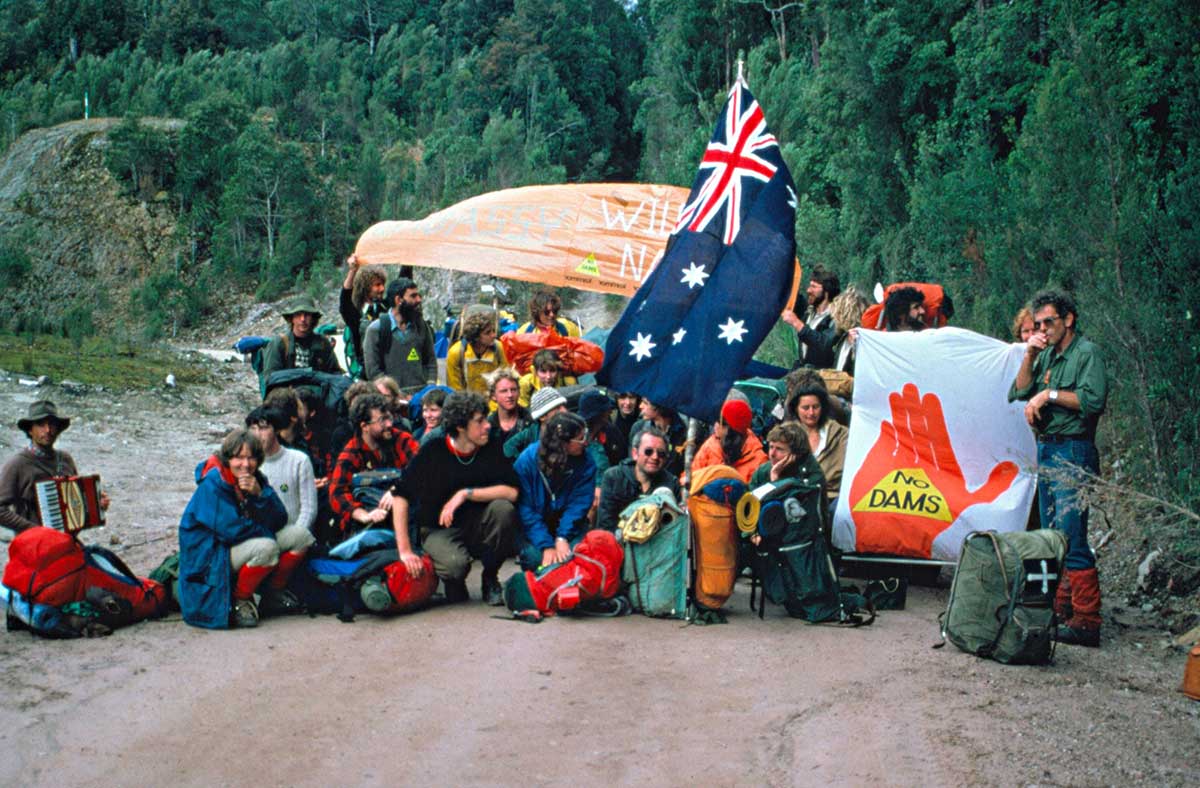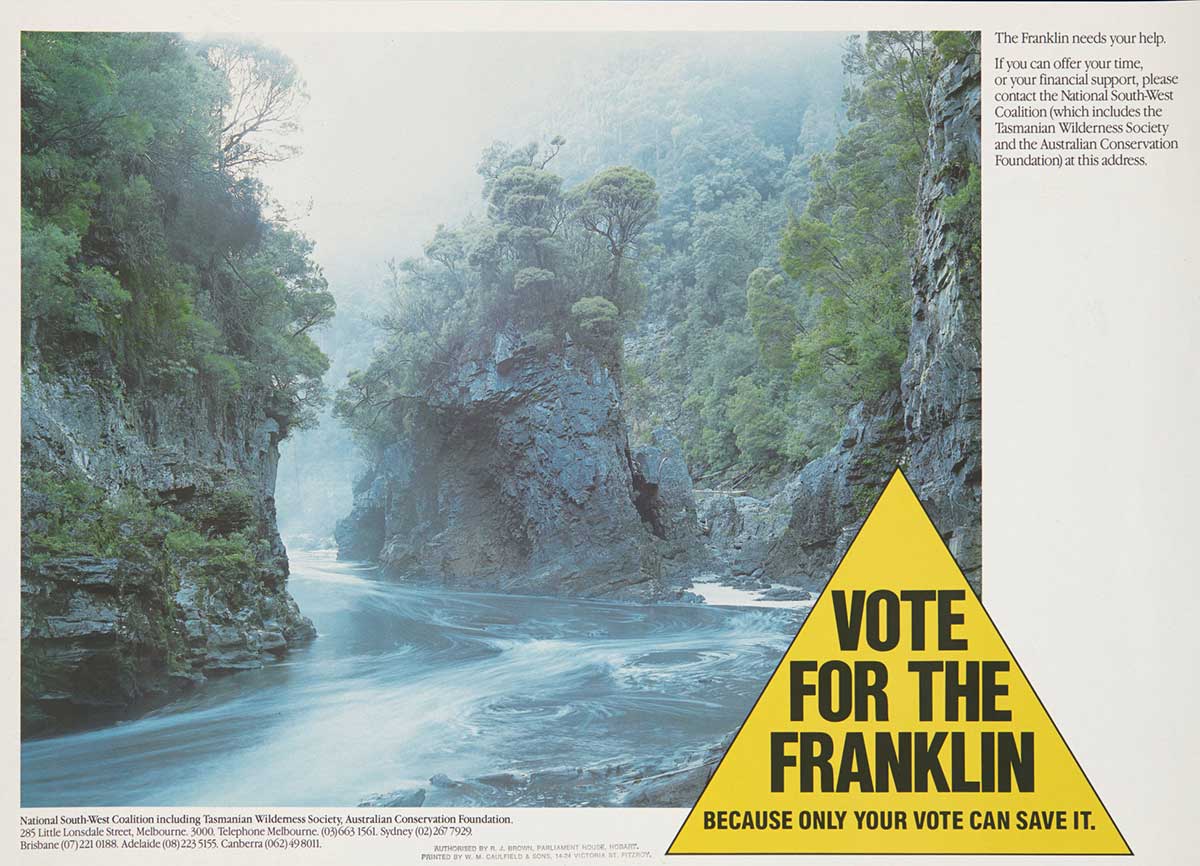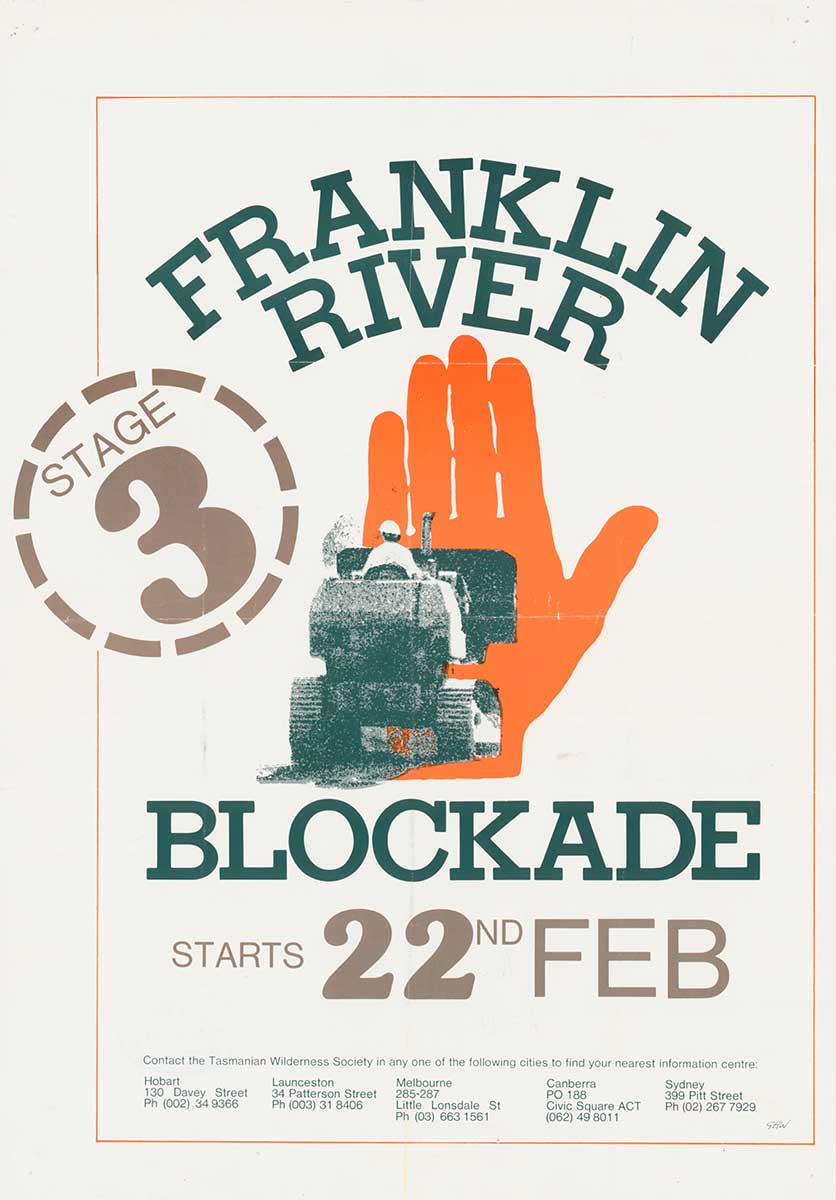Learning module:
Law and democracy Defining Moments
Balancing passion for change in a resilient democracy
4.3 Franklin Dam protests

Investigations 2.2 and 2.3 in this learning module examined the 1982 High Court case on the interpretation of the Constitution involved in the Tasmanian Government’s attempts to build a dam on the Franklin River.
This investigation explores the conflict that occurred between those groups who wanted to keep the Franklin River a wilderness area and those who supported the building of a hydro-electric dam. The issue created great division, and even violence in some instances, reflecting the passion felt on both sides.

In the end, after many years, the opponents of the dam won. The dam was not built.
How did this happen? And what aspects of active citizenship did the protesters use to achieve their aim?
Watch the following video about the Franklin Dam protests and look at the images that follow. As you go through the material, try to identify the various methods the opponents of the dam used to stop it.
1. Look through the possible protest methods listed below. Which of them were employed by the Franklin Dam protestors, according to the evidence you have seen so far?
2. Which methods used by the Franklin Dam protestors do you think were most effective in blocking the building of the dam? Why?
3. Were there any methods that you think were less effective? Why?
A resilient democracy allows its members to exercise freedoms. Among these are the freedoms that enable active participation in Australia’s democracy, within the bounds of law, under the UN Universal Declaration of Human Rights. These rights include freedom of speech, association, assembly, religion and movement.
4. Which of these freedoms can you now identify as having been important in helping people protest successfully against the Franklin Dam?
5. Which of these freedoms do you think were the most important for the Franklin Dam campaign? Why?
6. From what you have studied, and through further research, give one example from the Franklin Dam protests of each of these ways in which people can participate in Australian democracy:
- contact with political representatives
- use of lobby groups who know how to influence decision makers
- use of the electoral system to vote for or against political representatives
- direct action.
7. A democratic society also has to be a cohesive society. As well as using legal methods of protest, many Franklin Dam protesters broke the law by blocking workers from coming onsite to start their work.
a) How would the protesters justify their illegal actions?
b) How would people responsible for upholding the law counter these arguments?
c) How might breaking the law in pursuit of a democratic protest challenge the idea of a cohesive society?
8. If it is okay for one group to break the law for what they see as a good cause, can’t everyone justify breaking the law by saying it is for a good cause? Write a persuasive paragraph on this idea or hold a class debate about it.
9. What does this case study help you understand about Australia as a resilient democracy and a coherent society? Explain your ideas.
Conclusion
The ABC published the following article in 2012, on the 30th anniversary of the Franklin Dam dispute:
Conservationists have marked the 30th anniversary of the Franklin Dam blockade, but the issue continues to divide opinion in Tasmania.
About 1400 people were arrested for trying to stop work on the hydro-electric dam project in the state's south-west on the 14th of December, 1982.
The Former Greens leader Bob Brown said it was the biggest environmental protest in Australia's history.
‘Between 20,000 and 25,000 people turned out to save the Franklin in Hobart,’ he said.
The Commonwealth intervened and a High Court Ruling in 1983 backed the Hawke Government's decision to kill the project.
The then-Premier, Liberal leader Robin Gray, still views it as a tragedy. He has described it as one of the worst political decisions ever made, and said if the dam had been built Tasmania would be better off today.
‘We would have had a lot more industry in the state, we would have had cheaper electricity and we would have had clean electricity,’ he said.
Almost 1400 people were arrested for their opposition to the hydro-electric dam project.
Former Greens Senator Ian Cohen was involved in the blockade and remembers the international attention it attracted.
‘It was a massive effort and it was pioneering,’ he said.
‘It was a time where we were not so sure we were going to succeed and there was a lot of antagonism against us in the community and it was quite a revolutionary event in itself and I think that still reverberates until this day.’
About 70 people who were involved in the blockade have marked the milestone with a cruise up the Gordon river, on Tasmania's west coast.
The area has since been put on the World Heritage Register.
‘Franklin dam still controversial 30 years on’ Sydney Morning Herald, 15 Dec 2012
10. Why do you think people still disagree about whether or not the Franklin River should have been dammed?
Further research
To find out more go to the Defining Moment in Australian history: 1982 Protests against Franklin Dam in Tasmania lead to formation of the Greens.




















